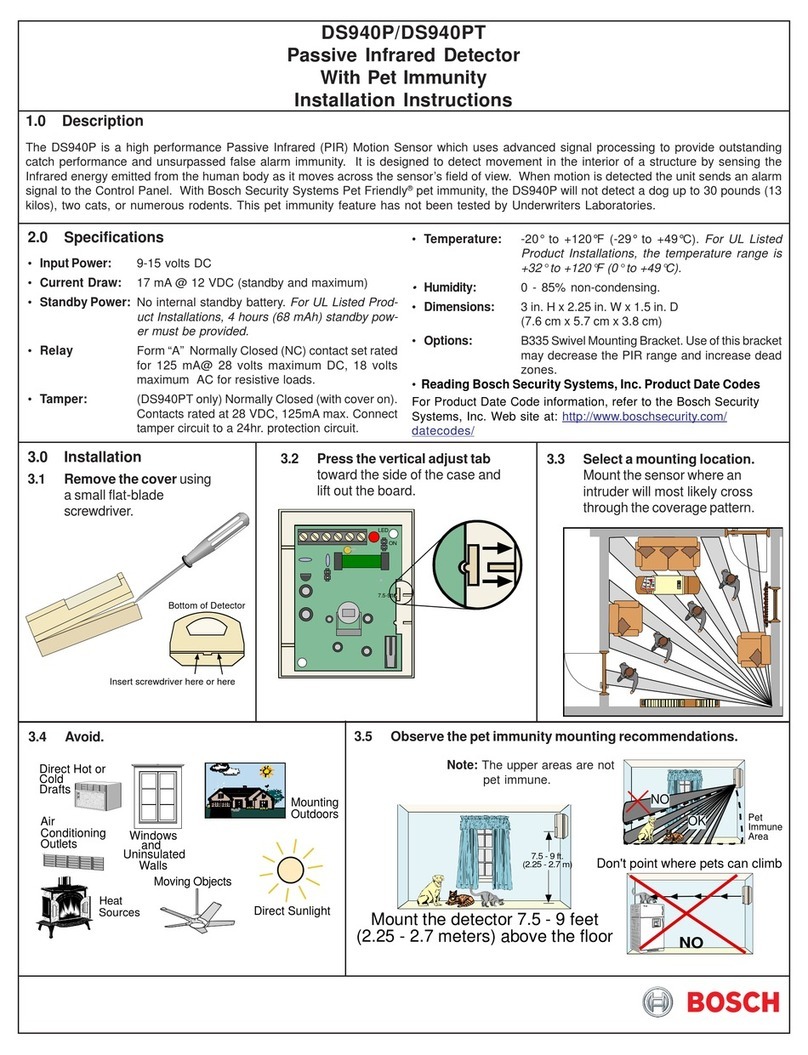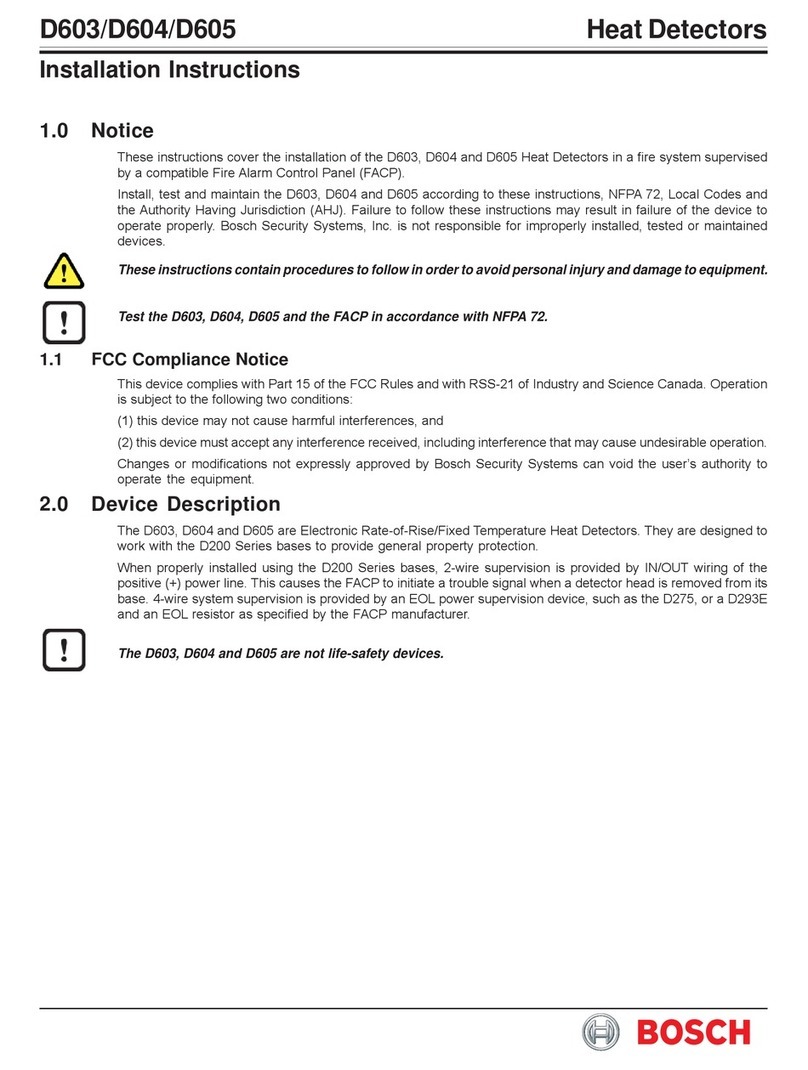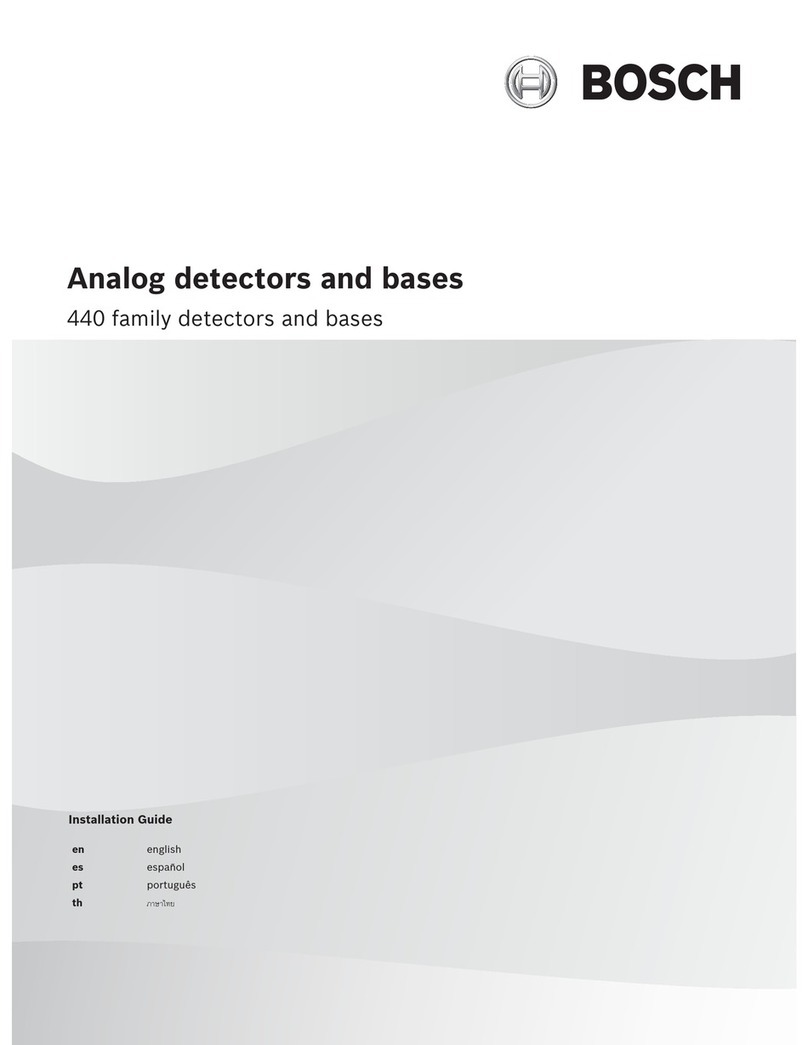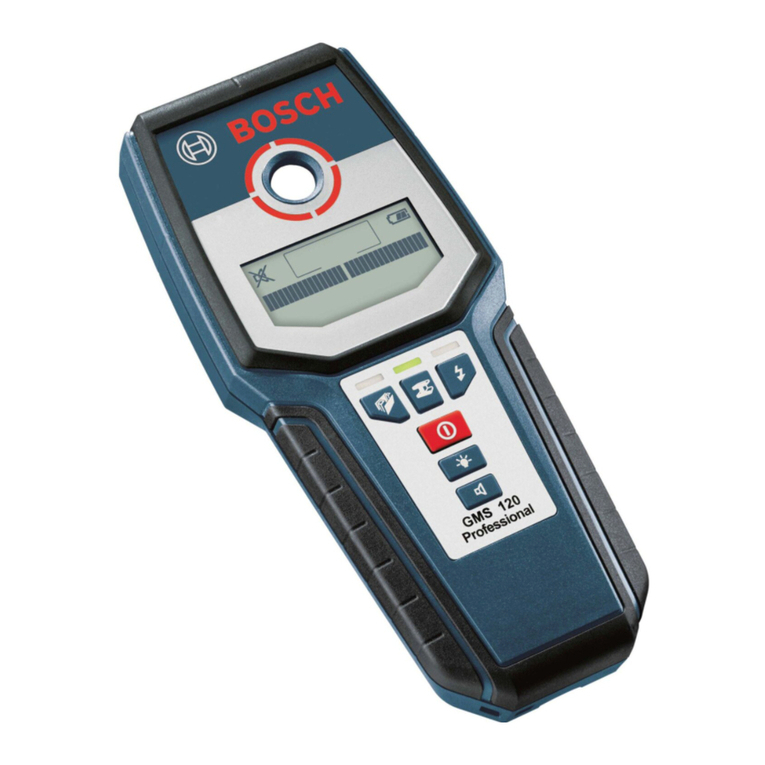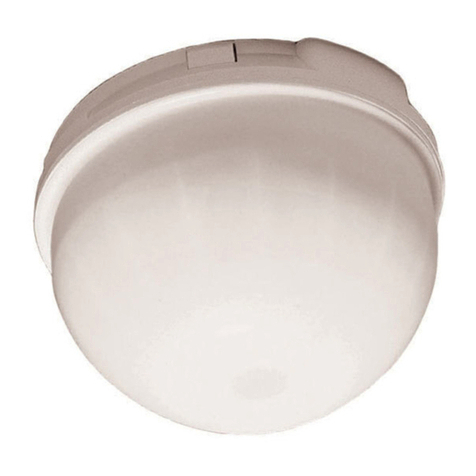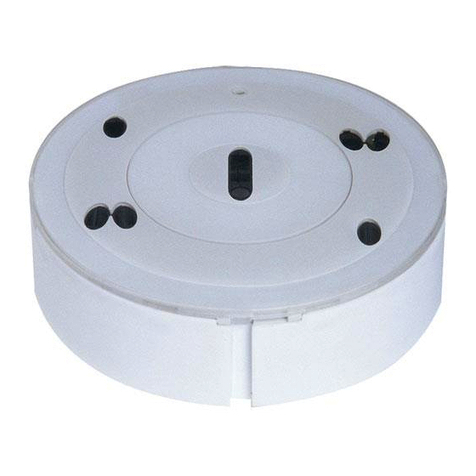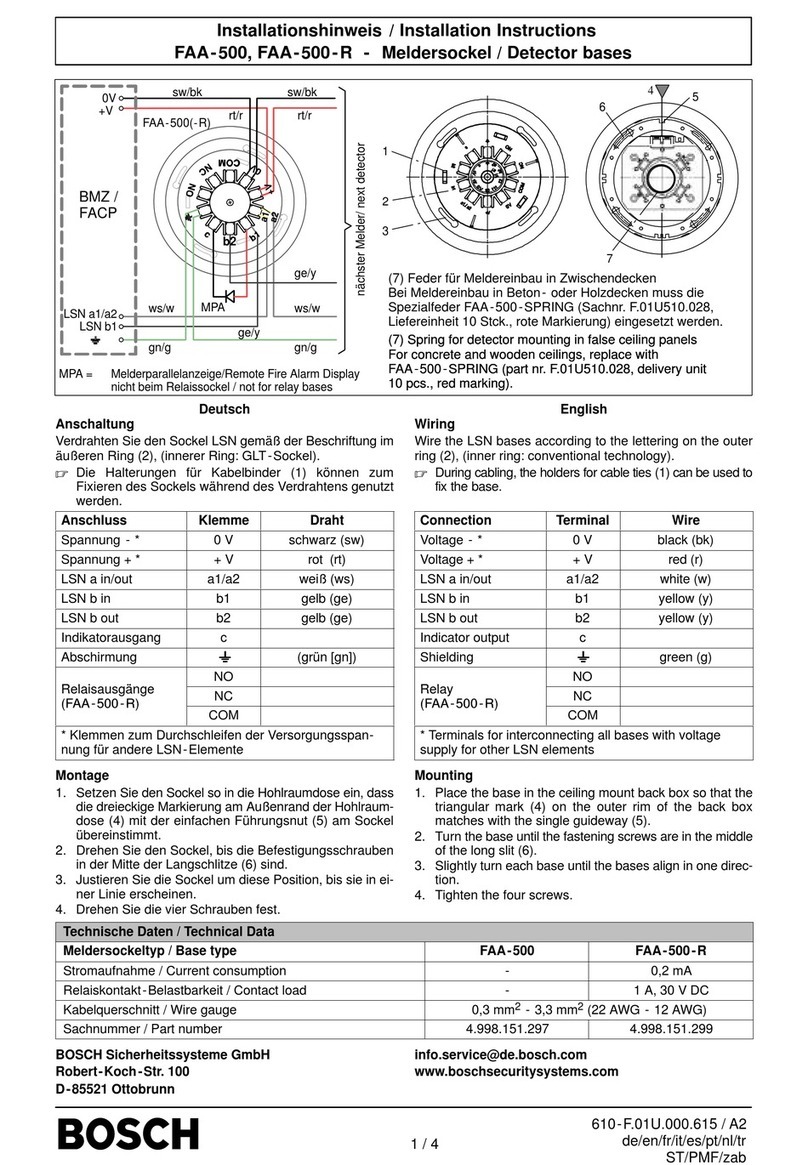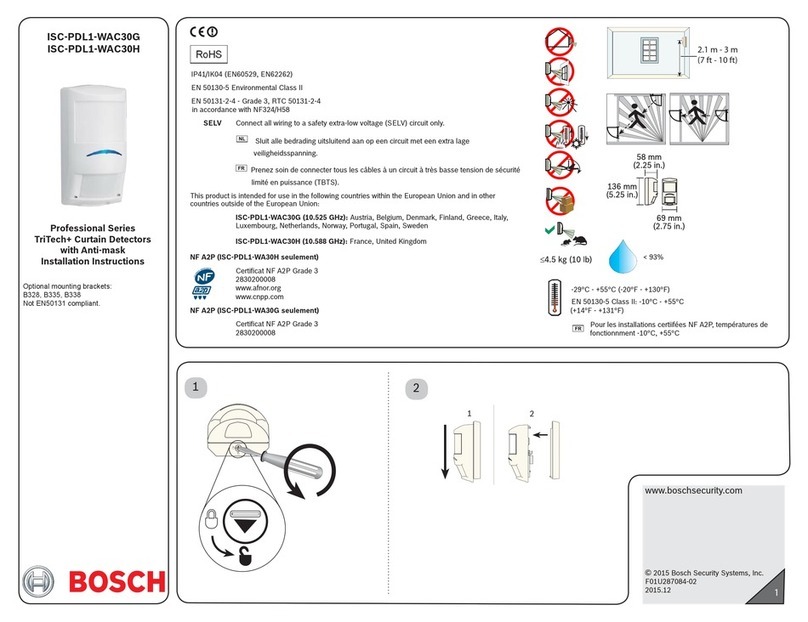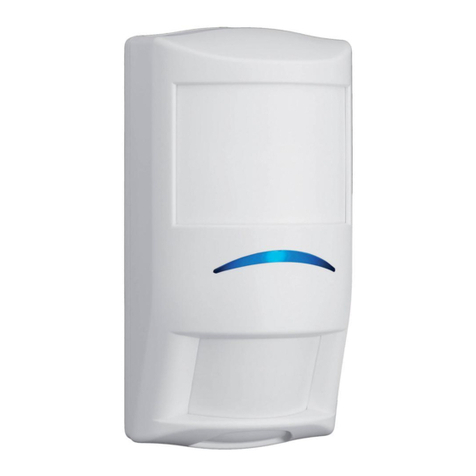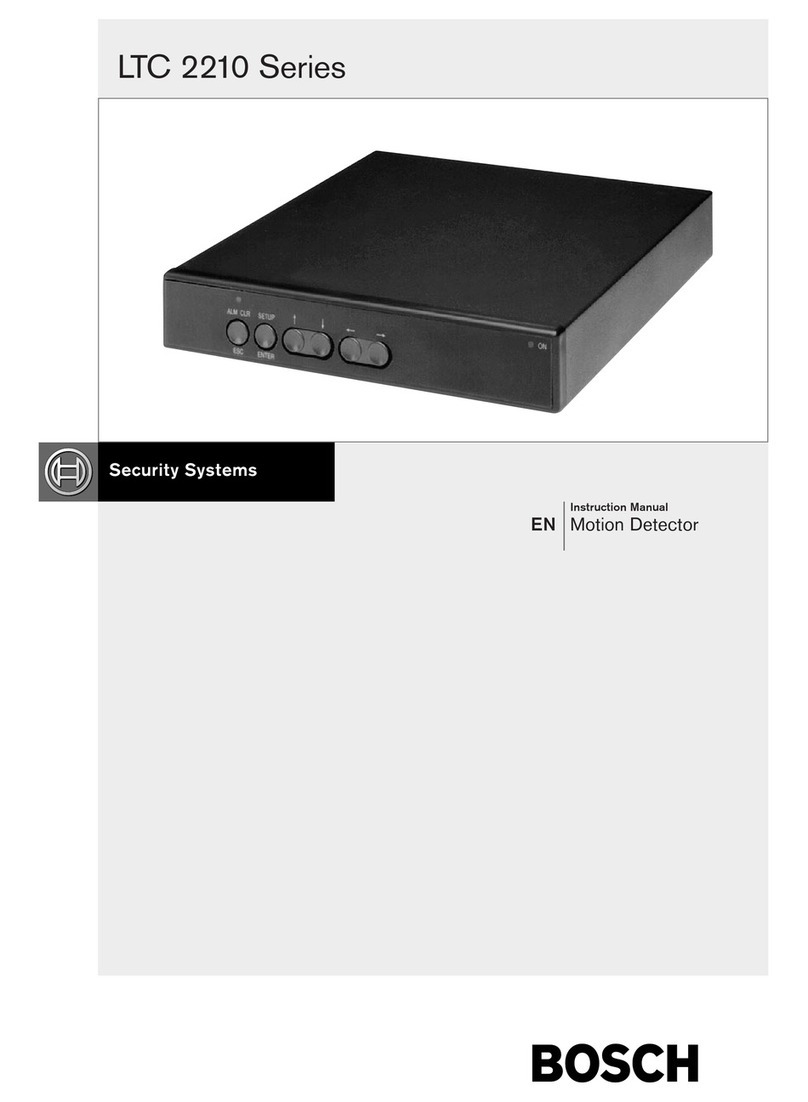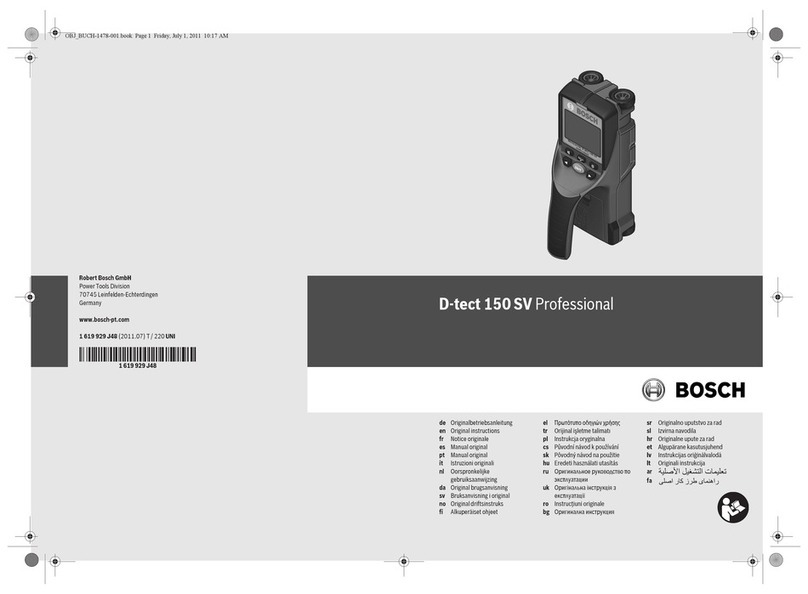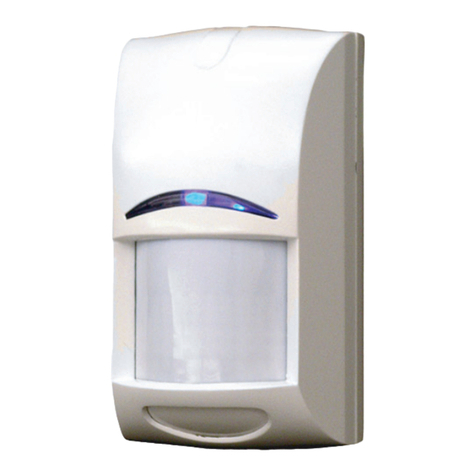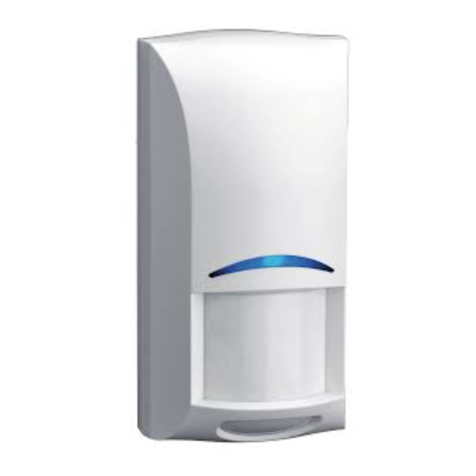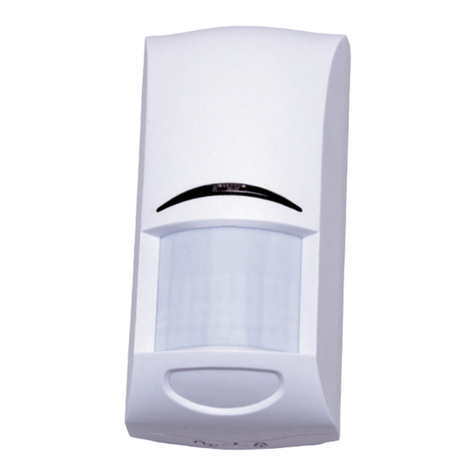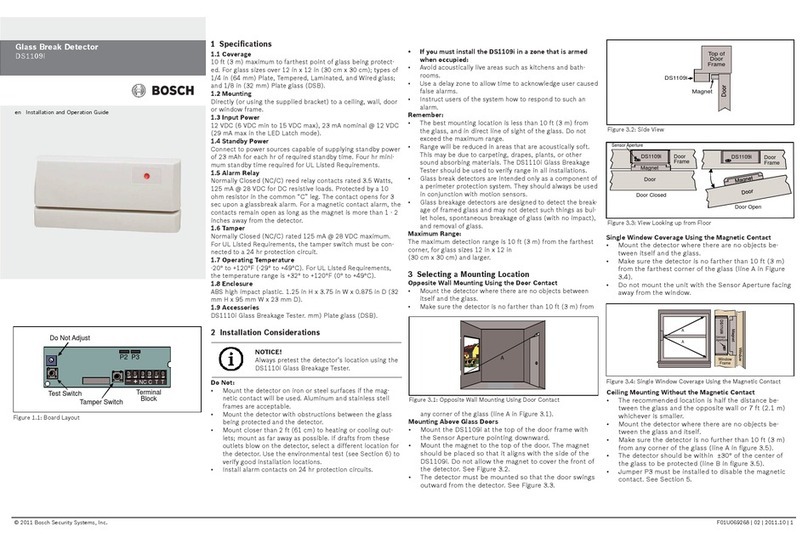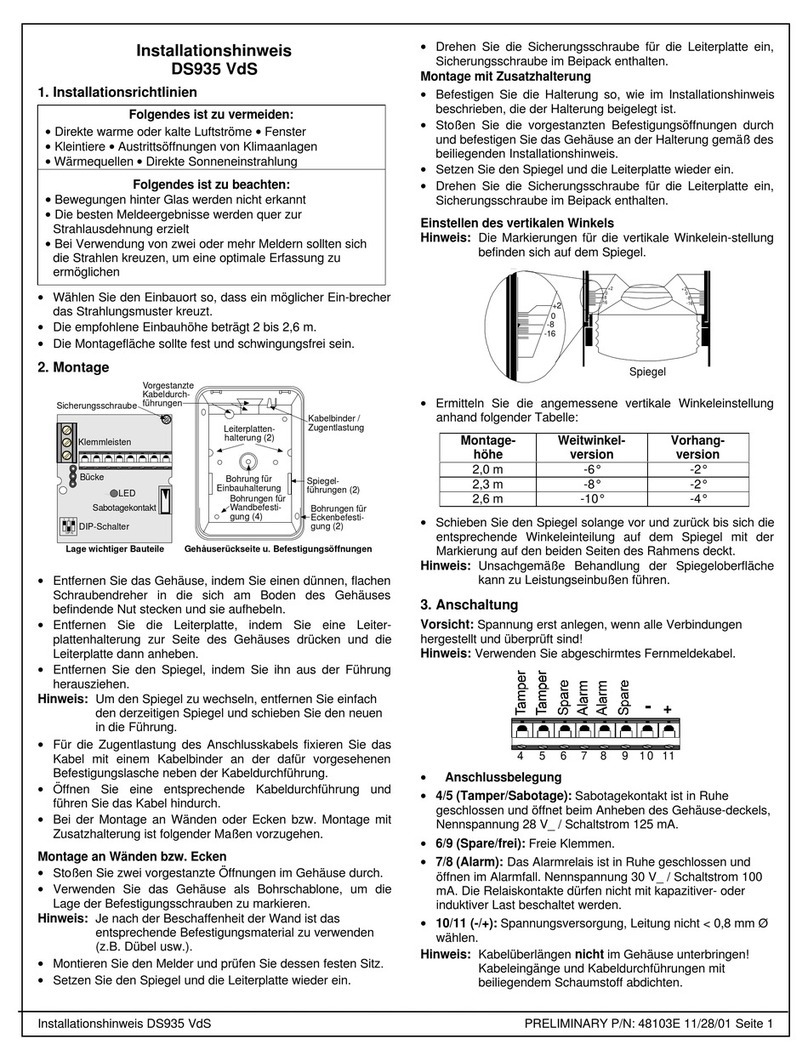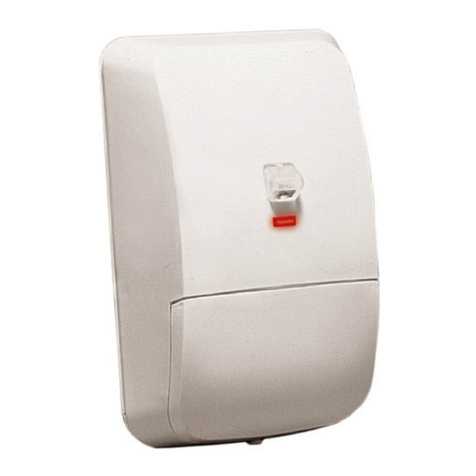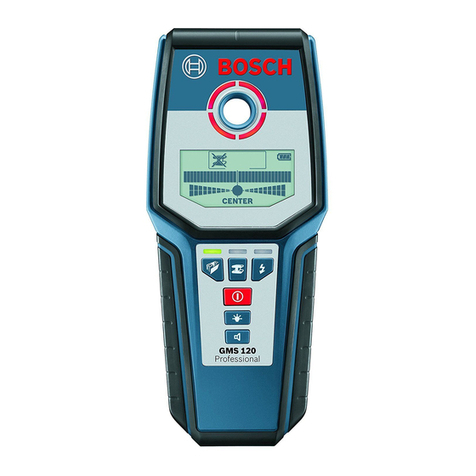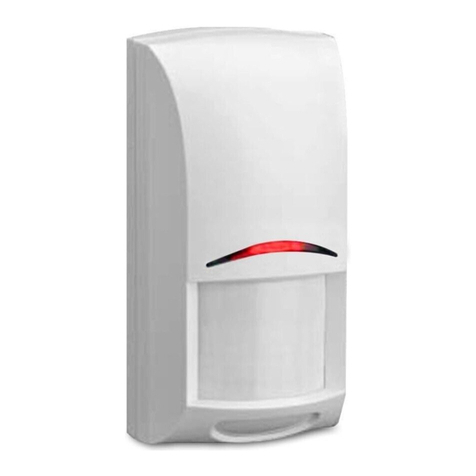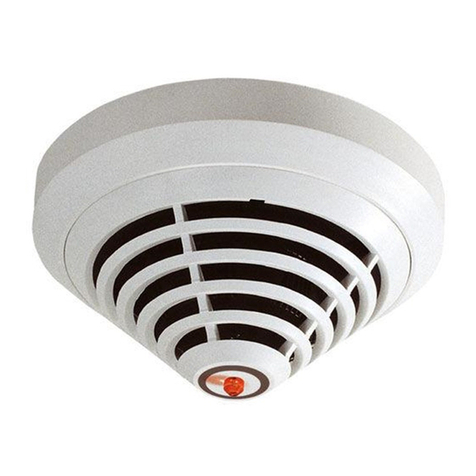
DS915 Recess Mount Passive Mount Infrared
Intrusion Detector
General Information:
The DS915 is a semi-flush mount, Passive Infrared Intrusion Detector which is
designed to mount in a standard single gang electrical box or directly to a wall
using the supplied flush mount ring. It uses alternate polarity pulse count
processing, is internally pointable and uses "grooves-in" Fresnel lenses to
provide 6 different coverage patterns.
Input Power: 10 TO 15 VDC non polarized; 15 mA.
Standby Power: No internal standby battery. Unit is intended to be
connected to DC power sources capable of supplying standby power in
the event primary power fails. 15 mA-h required for each hour of standby
time needed.
Range: The standard Broad Coverage lens provides a 30 ft. (9 m) long by
38 ft. (12 m) wide pattern. Optional lenses are also available. The Broad Pet
avoidance lens provides the same coverage without look down zones.
Coverage Poinability:+2° to -12° Vertical; ±10° Horizontal. Each 2° of move-
ment equals 1 ft. (.3 m) of pattern shift at 30 ft. (9 m).
Sensitivity: Adjustable for standard, intermediate and high sensitivity.
Alarm Relay: Normally Closed operation and protected by a 4.7 ohm
resistor in series with the relay contact. The reed relay contact is rated at
28 VDC, 125 mA maximum for DC resistive loads.
Temperature: The storage and operating range is -20°F to +120°F (-29°C
to +49°C). For UL Listed Requirements, the temperature range is +32°F to
+120°F (0°C to +49°C).
Options: TC6000 Test Cord, OLC91-3* Dual Corridor lens, OLW91-3* Dense
Wide Angle lens, OLP91-3* Pet Avoidance lens, OLR91-3* Long Range
Barrier lens and OLB91 Barrier lens. *Shipped in packages of three.
Select Mounting Location:
Sensitivity
Jumper
LED Enable
Test/Alarm LED
Mounting Hole
Mounting Hole
NV H I S
D
E
Background
Noise
Voltage
Connector
• Select a location that is most likely to intercept an intruder moving across the
coverage pattern. The DS915 is designed to mount to a standard single
gang electrical box (not supplied). Mount the box and pull wiring to the box
before installing the detector.
• Review pattern side views to estimate best mounting height. Recommended
mounting height is 6.5 ft. (2 m). The mounting range is from 3 ft. to 8 ft. (1 m
to 2.5 m).
• Remove the front cover by pulling out from the bottom.
• Connect wiring as shown.
CAUTION: Only apply power after all connections have
been made and inspected.
• Terminal 1 & 2 power limits are 10 to 15 VDC measured at the terminals,
polarity is not important. Use no smaller than #22 AWG ( .8 mm) wire pair,
500 ft. (150 m.) max. between the unit and the power source.
• Connect a Normally Closed burglar alarm loop to terminals 3 and 4.A detec-
tor alarm will cause an open circuit.
NOTE: Do not coil excess wiring inside unit.
• Mount the detector into the single gang box (if used) using the supplied
screws.
Recess Mounting without an electrical box
The DS915 may be recess mounted without the use of a single gang box by
using the supplied recess mount ring.
• Using the recess mount ring as a template, prepare an opening 1-7/8"
(48 mm) wide by 2-3/4" (60 mm) wide in the mounting surface.
• Route wiring through opening and ring.
• Place the ring over the opening and bend the support tabs into the opening
and around the mounting surface so that the ring fits snug against the wall.
• Connect wiring.
• Mount the detector to the ring using the supplied screws.
Select Sensitivity:
The DS915 permits selection of response sensitivity modes depending on the
type of coverage desired, and the installation environment.
NV H I S
D
E
Sensistivity Jumper
LED Jumper
Disabled (off)
Enabled (on)
Standard
ntermediate
High
Standard: Tolerates most environment extremes on this setting, but requires
the largest amount of intruder motion to achieve an alarm. Standard Sensitivity
is not recommended for use with barrier, long range barrier or dual corridor
coverages.
Intermediate: Recommended setting for most installations. Use in locations
where an intruder is only expected to cover a small portion of the protected
area. Tolerates normal environments on this setting.
High: Fast response to intruder signals. For use only in quiet environments
where thermal and illumination transients are not anticipated.
In the event the Sensitivity Jumper is missing, the unit will default to the inter-
mediate setting.
LED Disable: If viewing the operation of the LED is not required after setup
and walk testing are completed, remove the lens holder assembly and place
the LED Jumper across the center and top pin (marked D). If the Jumper is
missing, the LED is disabled.
Set up and walk testing:
• Choose the proper coverage pattern. If it's necessary to replace the lens,
perform the following.
- Remove the lens holder assembly by sliding it down to its lowest point and
pulling it out from the top.
- While facing the rear of the lens holder, gently push down and inwards on
the top ledge of the window frame until the frame pops out of the top track.
ALARM10-15
VDC
1234
